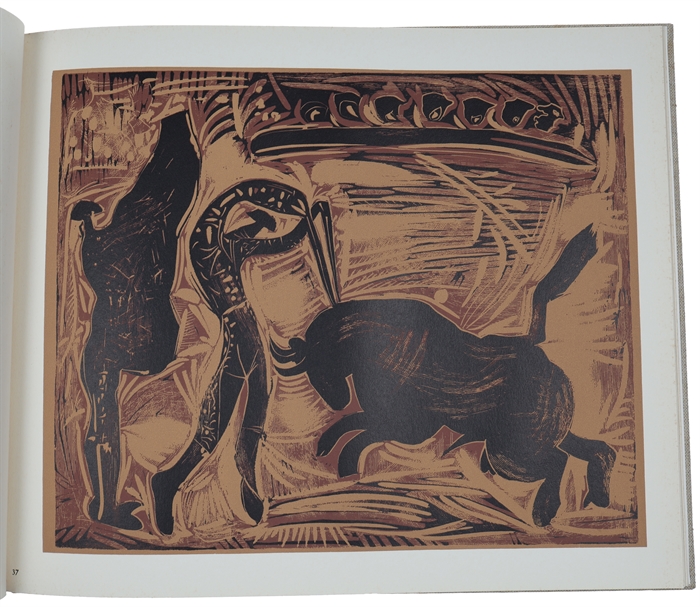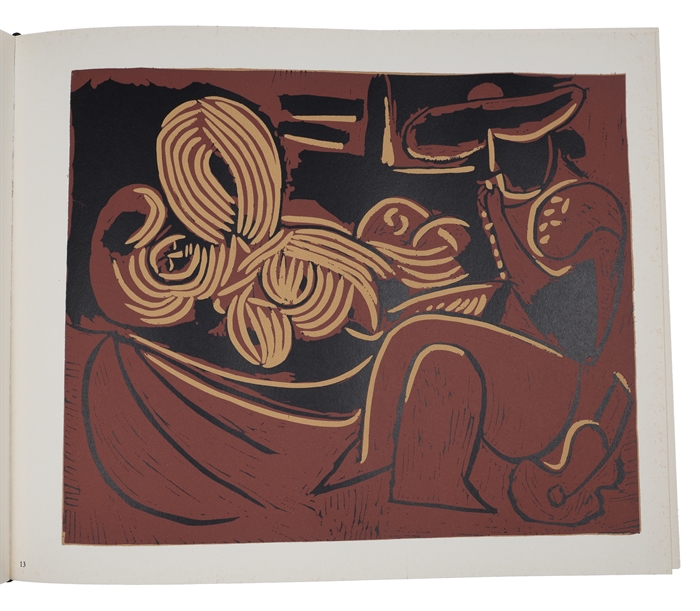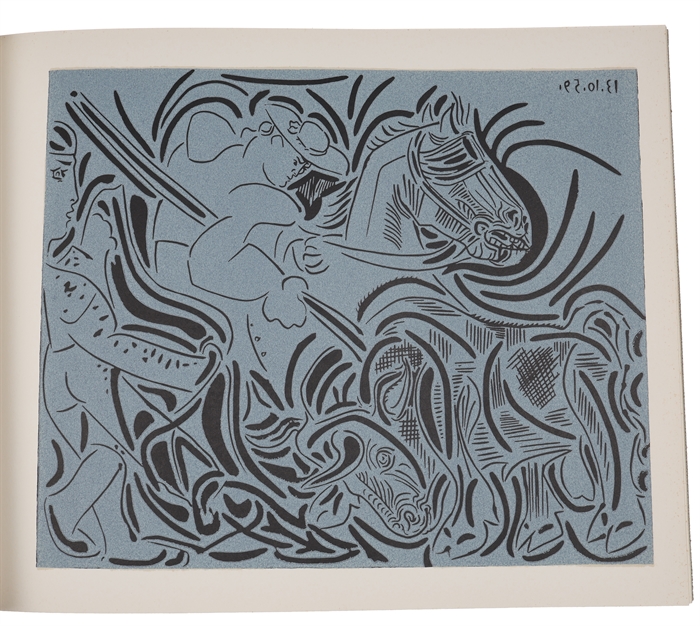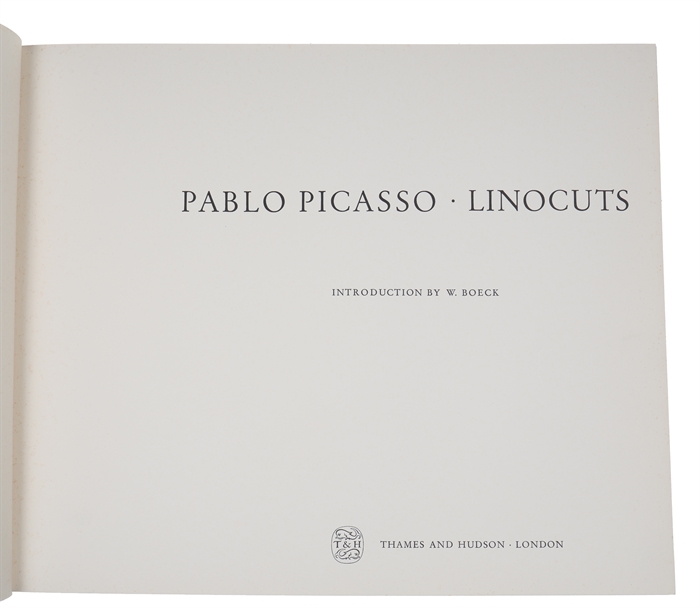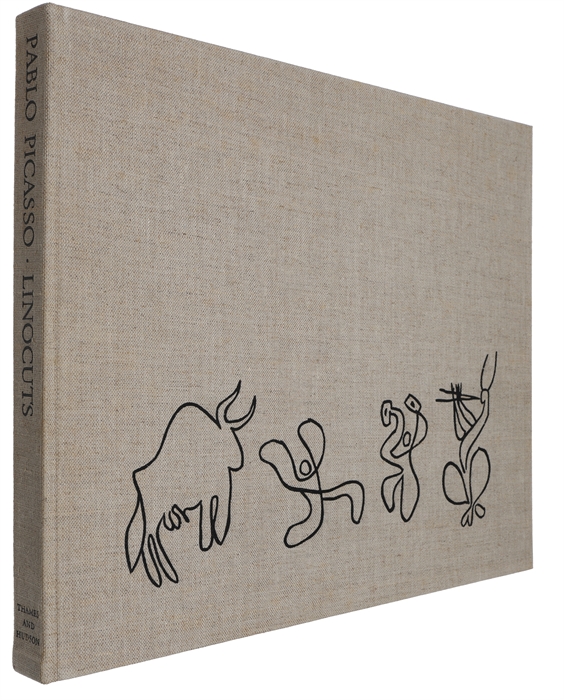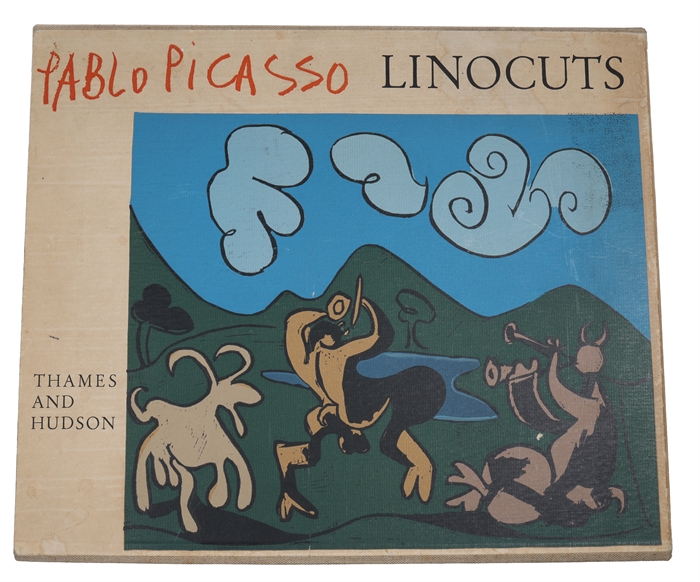PICASSO'S FAMOUS LINOCUTS
PICASSO, PABLO (+) BOECK, W (Introduction).
Pablo Picasso - Linocuts.
London, Thames and Hudson, 1963.
Folio-oblong (340 x 400 mm). In the original clothbinding with black printed Picasso-drawings on front board. Housed in the original slipcase. Very light marginal brownspotting to text-leaves, slipcase with a bit of wear and light miscolouring. Otherwise very nice and clean. (14) pp. + 45 linocuts by Picasso.
The uncommon and exquisitely printed “Linocuts” by Picasso, which marked the beginning a new period for him as an artist. The prints were made by carving away part of the surface of a sheet of linoleum then inking and printing the remaining surface. Picasso began creating linoleum cuts to give color a more prominent role in his graphic work having previously considered it a secondary medium. His linoleum cuts emerged from a desire to adapt previous artistic concepts to a new medium and he quickly achieved original results that were not secondary to his pervious works. Inspired by memories of bullfighting from his youth in Arles and Nimes Picasso focused on this theme in his linoleum cuts produced in the fall of 1959. Despite not having seen bullfights in Spain for many years, he felt their influence after the town of Vallauris allowed bullfighting under revised rules in 1954. “Just how and when Picasso became attracted by the linoleum technique is not known. Perhaps it was like the instance of the year 1957, when he capriciously finished his “L’ Arlésienne* with pigeon feathers picked up from the floor of his home “La Californie.” It must be assumed, aware as we are of Picasso’s working methods, that his interest in linoleum technique was derived from some insignificant yet real incident, as well as from a response to a deep artistic need. The smooth and supple drawings in India ink and lithograph pencil for the “Tauromaquia”, which set the tone for the subsequent linoleum cuts, reveal a difference, something remarkably new and fresh. The ink drawings, particularly, point the way to heavy and unmodeled designs which are more crisp and more succinct (their similarity with a silhouette-like effect is certainly significant). When he began the series of linoleum cuts, the artist was already prepared with a wide range of procedures that would adjust his subjects to the flat, extended areas that are inherent in this medium. Although Picasso had made only a few woodcuts in the past, he immediately adopted a resolute and robust approach to the new technique and interpreted in the widest possible way the rules of carving such an easily yielding material. Formal principles that embody lines and surfaces, as well as pictorial and decorative elements, are freely applied to create prints that are sometimes produced from a combination of several individual color blocks or, more often, from a single linoleum block that was cut and recut. Others, browns, and blacks, reminiscent of Greek vase painting, became the dominating color scheme, permitting a limited range of color variations. As usual, Picasso intuitively developed techniques which exhausted the medium.” (From the introduction to the present work)
Order-nr.: 61563

